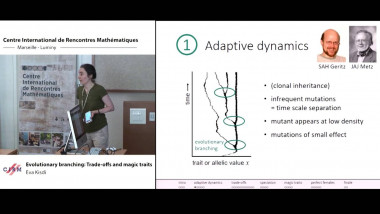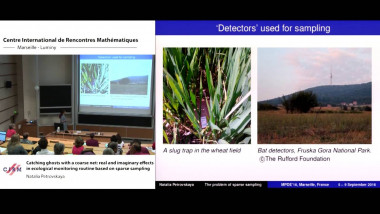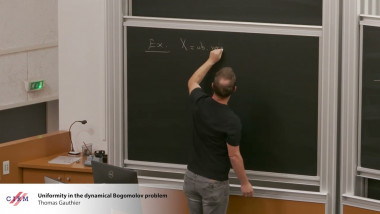Evolutionary branching: trade-offs and magic traits
By Eva Kisdi
Adaptive dynamics has shaped our understanding of evolution by demonstrating that, via the process of evolutionary branching, ecological interactions can promote diversification. The classical approach to study the adaptive dynamics of a system is to specify the ecological model including all trade-off functions and other functional relationships, and make predictions depending on the parameters of these functions. However, the choice of trade-offs and other functions is often the least well justified element of the model, and examples show that minor variations in these functions can lead to qualitative changes in the model predictions. In the first part of this talk, I shall revisit evolutionary branching and other evolutionary phenomena predicted by adaptive dynamics using an inverse approach: I investigate under which conditions a trade-off function exists that yields a given evolutionary outcome. Evolutionary branching can amount to the birth of new species, but only if reproductive isolation evolves between the emerging branches. Recent studies show that mating is often assortative with respect to the very trait that is under ecological selection. Such "magic traits" can ensure reproductive isolation, yet they are by far not free tickets to speciation. In the second half of my talk, I discuss the consequences of sexual selection emerging from assortative mating, and show how a perfect female should search for mates.

















![[1243] Degrés dynamiques](/media/cache/video_light/uploads/video/SeminaireBourbaki.jpg)




